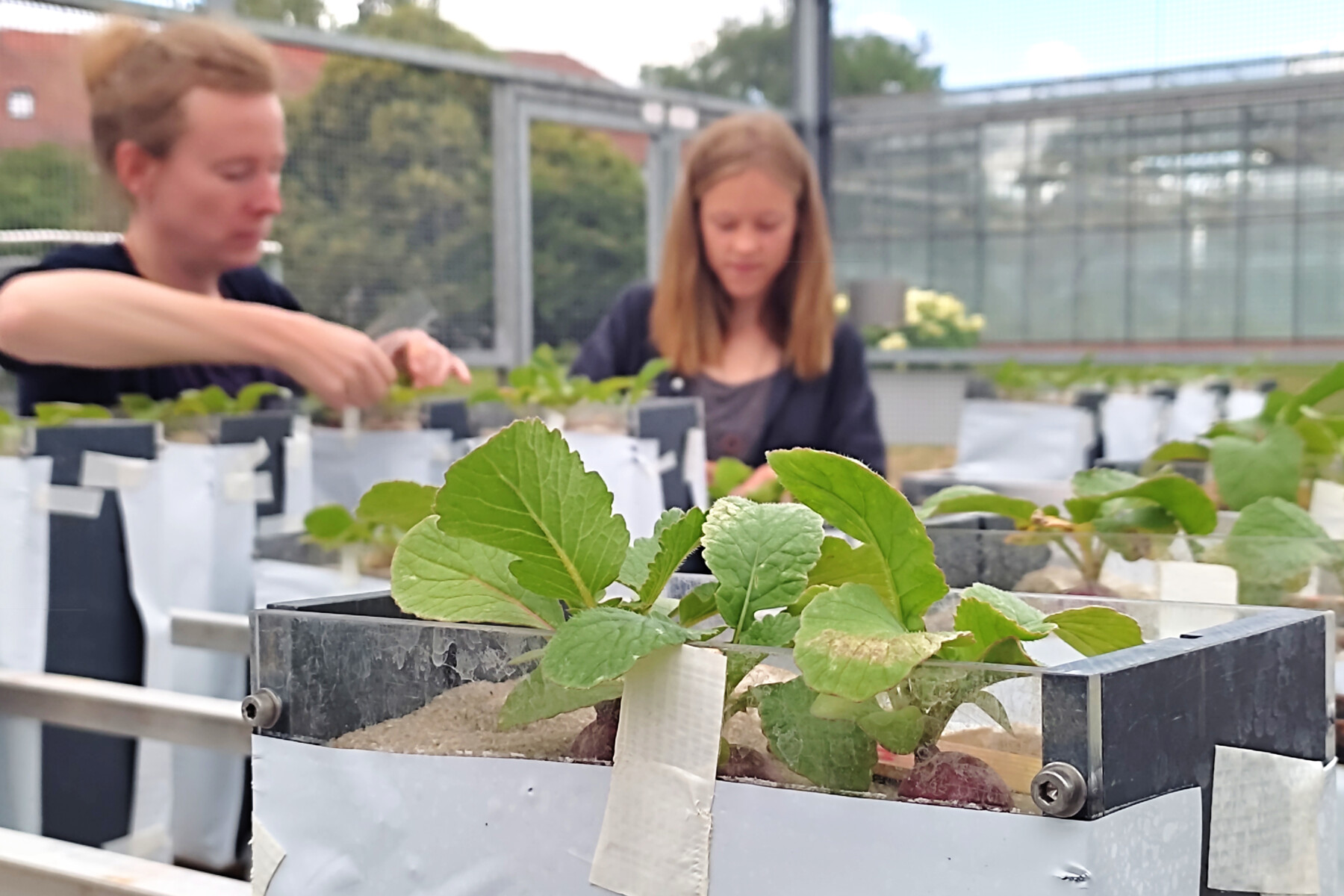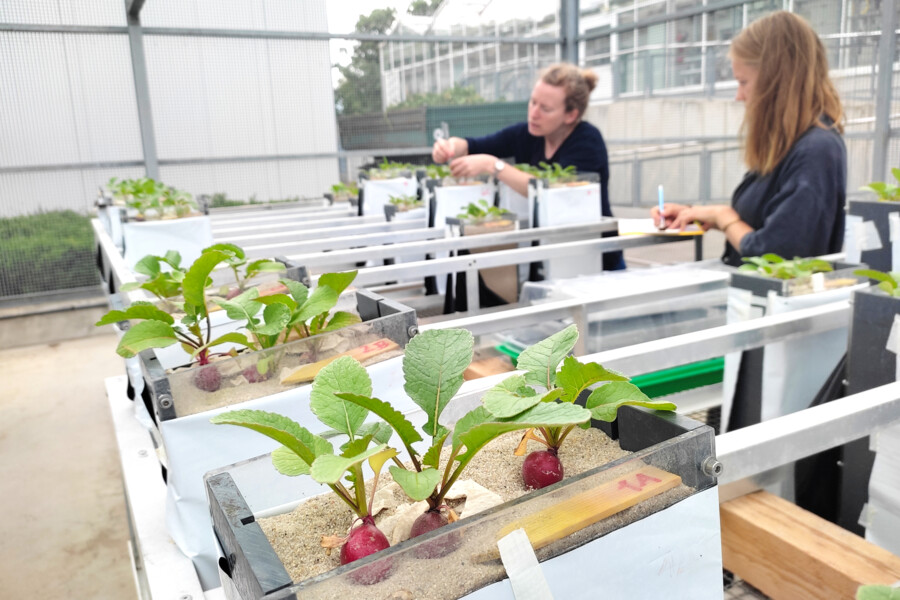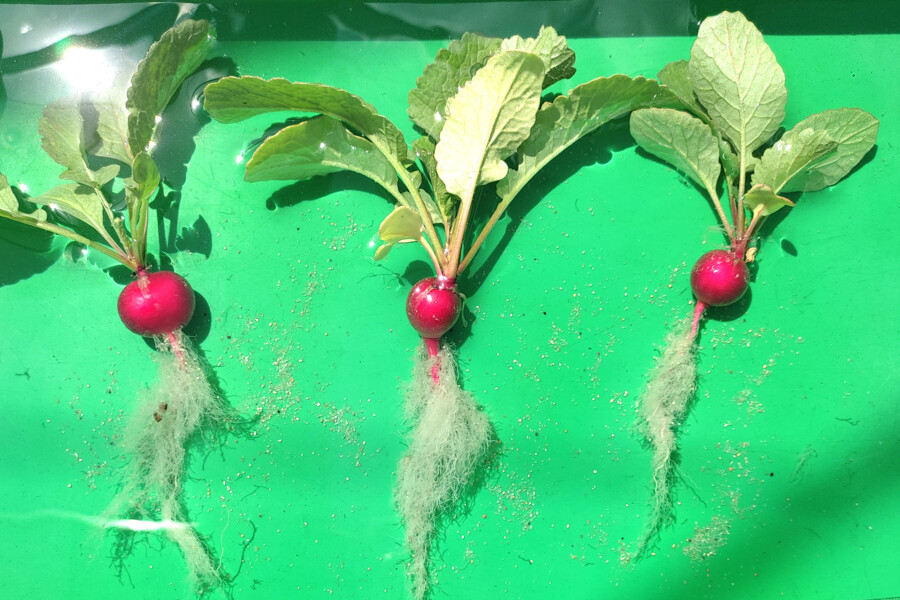Effect of plasma on radish seeds
First-time cooperation between the Leibniz Institutes IGZ and INP
The treatment of plant seeds before sowing aims to reduce microbial contamination on the seed coat, but also to stimulate seed germination as well as plant development and growth. At the INP, the researchers also investigate whether plasma treatments can improve plant adaptation to stress and plant health. There are already several small companies in Europe that offer plasma processes for seed hygiene.
The first applications of plasma treatment in vegetable crops were carried out at the INP. And now the method was trialled on radish (Raphanus sativus L.) seeds of the "Rudi" cultivar at IGZ. For this purpose, an experimental setup was developed using root boxes, so-called rhizotrons. These boxes, which can be viewed from the side, make it possible to see not only the above-ground biomass but also the root system of the plants. Growth parameters such as length, fresh and dry weights of roots, tubers and shoots, number of leaves and diameter of tubers were recorded as part of the investigations.
The data is currently being analysed for an initial joint publication. This should form the basis for further co-operation between the two Leibniz institutes. In future work, the experimental setup will be continued using rhizotrons.



